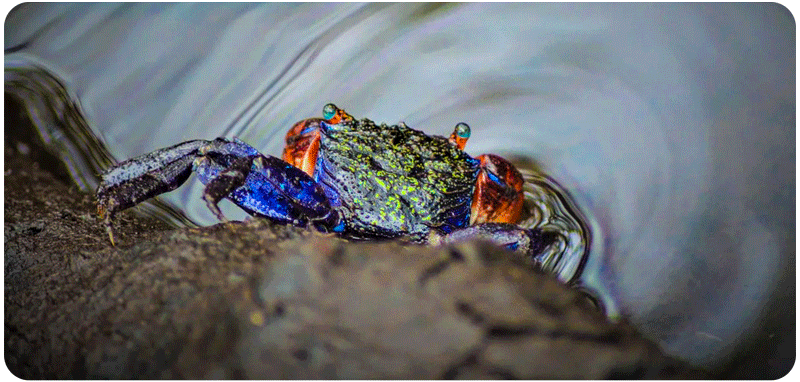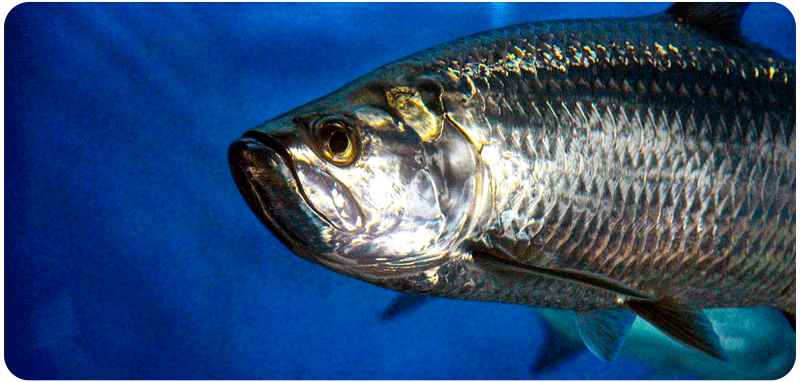An Interconnected Ecosystem: Dive into the Mangrove Food Web
by Nick Hammond on Apr 14, 2022
"(Mangroves) have been the quiet achievers that have somehow adapted to fit among our everyday lives."- Norman Duke / Professorial Research Fellow, JCU Australia

Primary Producers
(Autotrophs)
Mangroves are autotrophs, or primary producers, meaning that they produce their own carbon, or food source, with chemical reactions; in this case, photosynthesis. These leaves are grazed upon by mangrove crabs and other herbivorous scavengers.
Mangroves are autotrophs, or primary producers, meaning that they produce their own carbon, or food source, with chemical reactions; in this case, photosynthesis. These leaves are grazed upon by mangrove crabs and other herbivorous scavengers.
Decomposers
(Detritivores)
Detritivores feed on dead/decaying organic matter. As mangroves drop leaves a variety of fungi, bacteria, and protozoan break down the leaves into smaller bits that can be consumed by filter feeders such as oyster, barnacles, sponges, and sea squirts. Fiddler crabs are an example of larger detritivores that consume smaller bits of detritus as it is broken down by microbes and physical factors like wave action and storms.
Detritivores feed on dead/decaying organic matter. As mangroves drop leaves a variety of fungi, bacteria, and protozoan break down the leaves into smaller bits that can be consumed by filter feeders such as oyster, barnacles, sponges, and sea squirts. Fiddler crabs are an example of larger detritivores that consume smaller bits of detritus as it is broken down by microbes and physical factors like wave action and storms.

Primary Consumers
(Herbivores - Heterotrophs)
Mangrove leaves are grazed upon by mangrove crabs and other herbivorous scavengers, known as primary consumers. These organisms are heterotrophic, meaning that they require a carbon, or food source, from other organisms, like mangrove leaves. Good examples of primary consumers in mangrove ecosystems are mangrove crabs, mangrove eating insects, snails, and even manatees.
Mangrove leaves are grazed upon by mangrove crabs and other herbivorous scavengers, known as primary consumers. These organisms are heterotrophic, meaning that they require a carbon, or food source, from other organisms, like mangrove leaves. Good examples of primary consumers in mangrove ecosystems are mangrove crabs, mangrove eating insects, snails, and even manatees.
Secondary/Tertiary Consumers
(Predators - Heterotrophs)
There is a myriad of predators in mangrove root systems. From fish that eat crabs as they fall into the water, seahorses stalking tiny zooplankton, to octopods hunting around for unsuspecting prey in the prop roots, there is never a shortage of predators in and around the MANGs. Above the water, birds and raccoons will dig for bugs and crustaceans and don’t forget about snakes, such as the Mangrove Saltmarsh Watersnake, that lie in wait for unsuspecting prey to get too close!
There is a myriad of predators in mangrove root systems. From fish that eat crabs as they fall into the water, seahorses stalking tiny zooplankton, to octopods hunting around for unsuspecting prey in the prop roots, there is never a shortage of predators in and around the MANGs. Above the water, birds and raccoons will dig for bugs and crustaceans and don’t forget about snakes, such as the Mangrove Saltmarsh Watersnake, that lie in wait for unsuspecting prey to get too close!

Apex Predators
(Heterotrophs)
Apex predators are at the top of the food web and don’t really have to worry about predation. In mangrove ecosystems there are several apex predators both on land and underwater. On land, big cats are King. In Florida, mangrove ecosystems are patrolled by bobcats and the occasional Florida panther. In Water, the bigger the fish, the better the predator. Of course this means that snook, tarpon, redfish, and sharks are characteristic apex predators in these ecosystems. Finally, our semiaquatic apex predators would be the river otter, and the saltwater crocodiles which are both extraordinary hunters around mangrove systems.
Apex predators are at the top of the food web and don’t really have to worry about predation. In mangrove ecosystems there are several apex predators both on land and underwater. On land, big cats are King. In Florida, mangrove ecosystems are patrolled by bobcats and the occasional Florida panther. In Water, the bigger the fish, the better the predator. Of course this means that snook, tarpon, redfish, and sharks are characteristic apex predators in these ecosystems. Finally, our semiaquatic apex predators would be the river otter, and the saltwater crocodiles which are both extraordinary hunters around mangrove systems.

Mangroves don’t just improve our water quality and provide life for thousands of marine life species, they also stabilize our coast and trap carbon to keep our planet healthy.🌎🌱
Through our Buy One, Plant One® initiative we're working to replant and restore mangrove ecosystems across the globe. Learn more about our planting efforts as we work to change the world, one mangrove at a time, by heading over to Our Mission page.
Through our Buy One, Plant One® initiative we're working to replant and restore mangrove ecosystems across the globe. Learn more about our planting efforts as we work to change the world, one mangrove at a time, by heading over to Our Mission page.
Tags:
Related Articles






